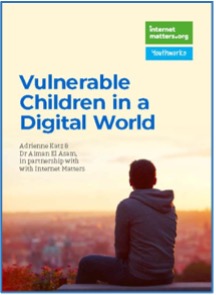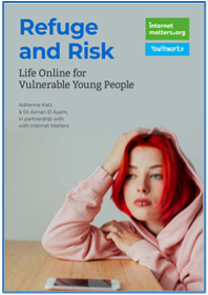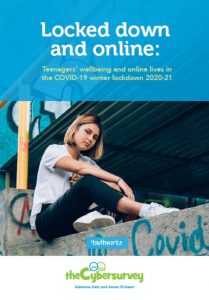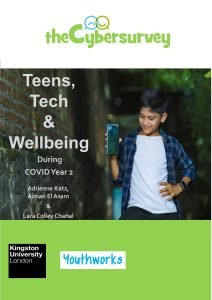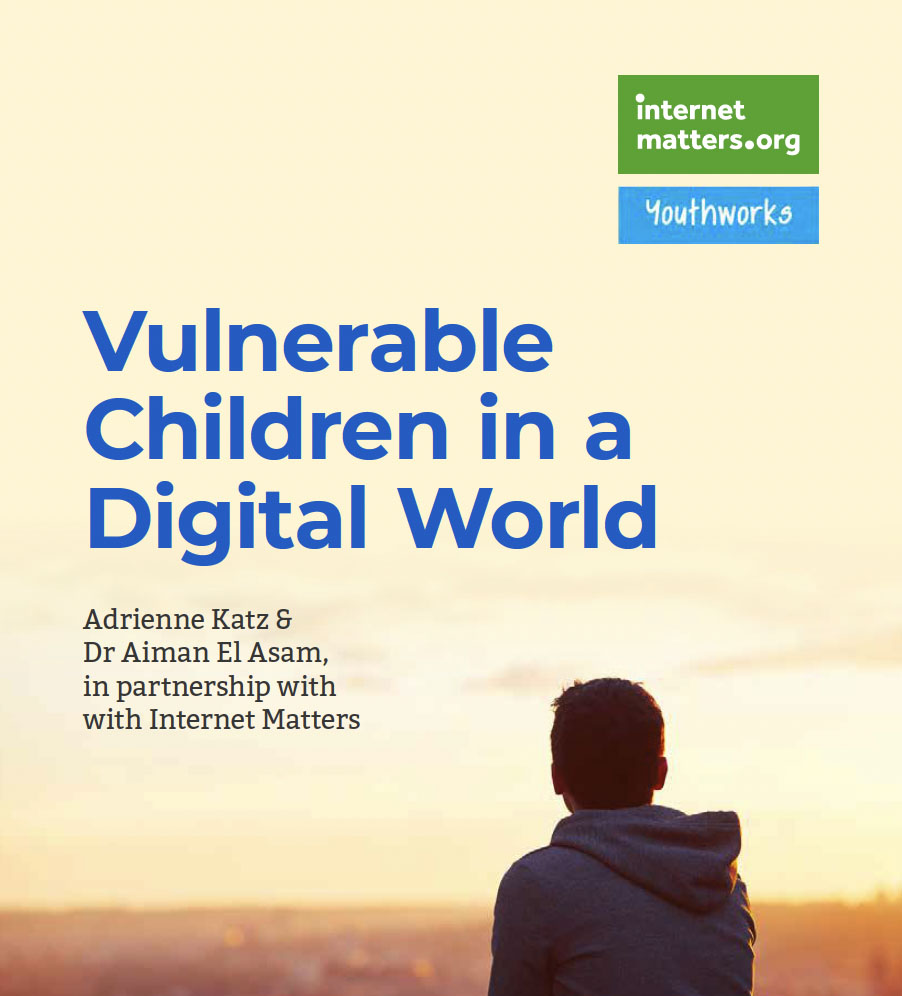Our Research Evidence
enable is evidence based
Behind our unique support, training and tools to help children flourish online, there is evidence from research, surveys and consultations. Listening first is our approach.
Our courses are created for you by online safety specialists and psychologists, with foster carers and young people.
Since 2011, our annual Youthworks Cybersurvey has revealed how online life is not experienced in the same way by all children and young people. We’ve learned that some are more likely to report being victimised, targeted, or badly affected by what they see and who they talk to online.
Certain children might become obsessively dependent on their online experiences, or depressed and anxious due to what they encounter. But so many describe their online lives as vital and a comfort. Being connected makes them feel ‘like other people’.
The possibilities offered by technology can be life changing for them and their phone is often seen as ‘a part of me,’ or ‘my identity’ offering connection to others, entertainment, soothing apps and a ‘window on the world’ widening their horizons and skills. In this way the internet represents both a refuge and a risk for them.
While for the majority, digital life brings a thrilling range of possibilities, some young people need extra support to use technology safely.
In 2017 Adrienne Katz and Aiman El Asam formed a research partnership to study the online experiences of children and teens who have experienced adversity, or live with difficulties.
Intersecting difficulties
Vulnerable Children in a Digital World
While children in care have been studied, their family situation may not be the only difficulty they face. Many have disabilities or emotional and mental health challenges. Some have learning difficulties. We found that the more vulnerabilities present – the higher the likelihood of the child encountering risk. We also showed that certain vulnerabilites were associated with particular risks and that there are relationships between risks themselves.
This does not mean restricting and limiting their online lives, but instead, considering how this should be enabled and supported so that they are safer while enjoying the opportunities other children have. It helps caring adults to focus on the needs of the child.
Because risks are the product of multiple interacting factors, we should think about:
- online and offline contexts
- individual capabilities and development
- emotional wellbeing
- parental online safety support
- language acquisition and difficulties
And alongside these, there are the functions and features of online platforms which encourage or facilitate particular human behaviours.
Our research team has also studied the responses of professionals in Children’s Services and those in therapeutic roles. In cases with a digital component, we identified gaps in training, practice and procedure that make it more difficult for these teams around the child.
Examples of reports for policy and practice include:
All Cybersurvey reports can be viewed at www.thecybersurvey.com
Reports for Policy & Practice and Research Papers on Online life for Vulnerable Children
Reports:
a). Vulnerable Children in a Digital World. Adrienne Katz and Aiman El Asam, A. 2019. Youthworks in partnership with Internet Matters.
b). In Their Own Words: The Digital Lives of Schoolchildren. 2020. Adrienne Katz and Aiman El Asam, A. 2019. Youthworks in partnership with Internet Matters.
c). Look At Me: Teens, Sexting and Risks. Adrienne Katz and Aiman El Asam. 2020. Youthworks in partnership with Internet Matters.
d). Refuge and Risk: Life Online for Vulnerable Young People. 2021. Adrienne Katz and Aiman El Asam. 2019. Youthworks in partnership with Internet Matters.
e). Locked Down and Online. 2021 Adrienne Katz, Aiman El Asam. Youthworks and Kingston University.
f). Young People’s Digital Wellbeing, Maximising the Potential and Minimising the Risks. 2021. Cathy Street, Aiman El Asam and Adrienne Katz. A chapter in ‘Young People, Social Inclusion and Digitalisation’ for the Council of Europe Youth Partnership, pp105-122.
g). Teens, Tech & Wellbeing During Covid Years. 2023. Katz, A. El-Asam, A. & ColleyChahal, L. Youthworks and Kingston University.
- El Asam, A. & Katz, A. (2018).Vulnerable Young People and Their Experience of Online Risks
Pages 281-304 | Human-Computer Interaction [LINK] - El-Asam, A. Katz, A., Street, C. Nazar, N.M and Livanou, M. (2020). Children’s services for the digital age: A qualitative study into current procedures and online risks among service users. Children and Youth Services Review. Volume: 122. [LINK]
- El-Asam, A. Lane, R. Pearson, K. & Katz, A.(2021). The “Glaring Gap”: practitioner experiences of integrating the digital lives of vulnerable young people into practice in England. Information, Communication and Society. [LINK]
- El-Asam, A. Lane, R. and Katz, A. 2022. Psychological Distress and its mediating effect on experiences of online risks: The case for vulnerable young people. Frontiers in Education [LINK].
- El-Asam, A. Colley-Chahal, L. and Katz, A. Social Isolation and Online Relationship-Risk Encounters among Adolescents with Special Educational Needs. 2023. [LINK]

